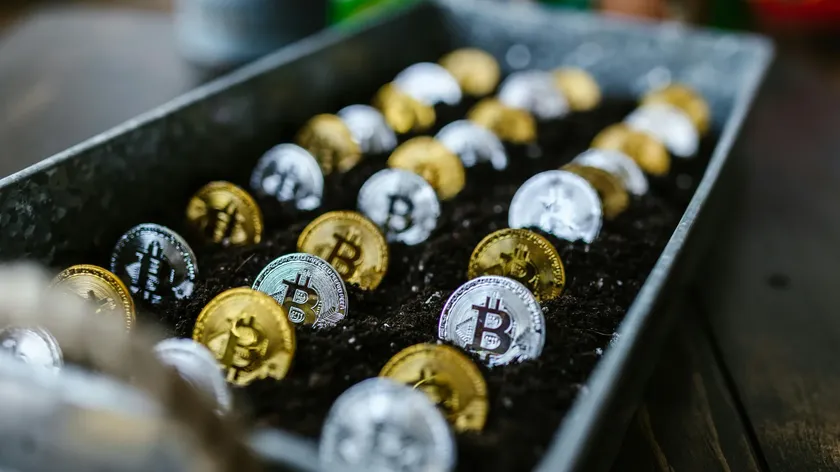Technology
Bitcoin Supply Crunch Looms as Massive Withdrawals Hit Exchanges
Leading crypto analysts discuss the implications of massive Bitcoin withdrawals from exchanges, with reserves hitting seven-year lows. This exclusive interview explores the causes behind the potential supply crunch and what it means for investors.
ParAdrian Singh
Publié le
#bitcoin#cryptocurrency#exchange-withdrawals#market-analysis#institutional-adoption

Bitcoin reserves on exchanges hit lowest levels in seven years as investors move to cold storage
In an exclusive interview with leading cryptocurrency analysts, we explore the implications of a potentially historic Bitcoin supply squeeze on exchanges. Here's what the experts had to say about this developing situation.
Q: What's driving the recent massive outflow of Bitcoin from exchanges?
A: "We're witnessing an unprecedented exodus of Bitcoin from exchanges," explains Sarah Chen, Head of Research at CryptoMetrics. "In just two weeks, approximately 114,000 bitcoins - worth over $14 billion - have been withdrawn from trading platforms. This has pushed exchange reserves to their lowest level in seven years, with total holdings now between 2.45 and 2.83 million bitcoins, depending on the data source."
Q: How should we interpret this dramatic movement?
A: "This isn't just routine market behavior," notes Marcus Rodriguez, Chief Strategy Officer at Digital Asset Capital. "We're seeing a fundamental shift in how both retail and institutional investors approach Bitcoin custody. They're increasingly moving their assets to cold storage - offline wallets - which effectively reduces the immediately available supply for trading."
Q: What's motivating investors to withdraw their Bitcoin?
A: Multiple factors are at play, according to our experts:
1. Long-term Holding Strategy
"Many investors, both individual and institutional, are adopting a 'hodl' mentality," explains Chen. "They're securing their assets in private wallets rather than leaving them on exchanges, indicating a strong belief in Bitcoin's long-term value proposition."
2. Regulatory and Platform Risk Concerns
"The crypto industry has seen its share of exchange failures and regulatory challenges," Rodriguez points out. "Investors are increasingly wary of custody risk and potential regulatory clampdowns, preferring to maintain direct control of their assets."
3. Institutional Adoption
"With Bitcoin recently breaking past $125,000 and the introduction of spot ETFs on Wall Street, we're seeing unprecedented institutional interest," says Chen. "These players typically prefer self-custody or qualified custodian solutions over exchange storage."
Q: What are the implications of this 'supply crunch'?
A: "It's important to understand that this isn't a true shortage of Bitcoin," clarifies Rodriguez. "Rather, it's a reduction in readily available supply on exchanges. This could lead to:
- Increased price volatility due to reduced liquidity
- Larger spreads between buying and selling prices
- Potential difficulty in executing large trades without significant price impact"
Q: Are there any risks to this analysis?
A: "Several factors need consideration," Chen cautions. "First, data discrepancies exist between different analytics providers. Also, this withdrawal pattern isn't entirely new - we've seen similar trends in previous market cycles. Furthermore, price appreciation isn't guaranteed just because exchange supplies are low."
Q: What should new investors consider in this environment?
A: Rodriguez advises: "New market participants need to be strategic. They may face:
- Challenges in acquiring significant positions quickly
- Higher transaction costs due to reduced liquidity
- Need for careful timing and platform selection
It's crucial to have a clear strategy - whether that's gradual accumulation or tactical trading - and understand that the current market structure favors long-term holding."
Q: Could this trigger a sustainable price rally?
A: "While reduced exchange supply typically supports price appreciation, it's just one factor," Chen explains. "Market dynamics are complex, involving macroeconomic conditions, regulatory developments, and technological advancement. The 'supply crunch' narrative should be viewed as part of a broader market evolution rather than a guaranteed price catalyst."
Q: How might this affect the broader crypto ecosystem?
A: "This trend could accelerate the development of new trading infrastructure," Rodriguez suggests. "We might see:
- Innovation in decentralized exchange mechanisms
- New custody solutions for institutional investors
- Evolution of market-making strategies to address liquidity challenges
The market is adapting to changing investor preferences and needs."
Our experts emphasize that while the current situation presents interesting opportunities, investors should maintain a balanced perspective and thorough risk management approach. The evolving dynamics of Bitcoin custody and trading infrastructure continue to reshape the cryptocurrency landscape, with implications extending far beyond immediate price action.
This supply-demand restructuring marks another milestone in Bitcoin's maturation as an asset class, though its full impact remains to be seen in the coming months and years.
Adrian Singh
Business reporter focused on economic freedom, foreign investment, and institutional transparency.
